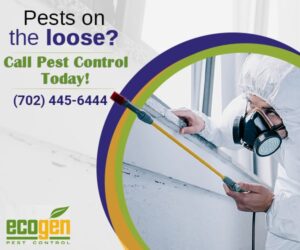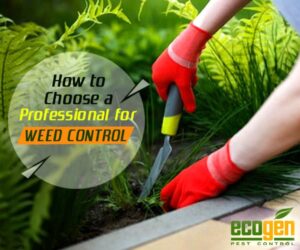As drought conditions become increasingly common across the western United States, they bring with them an unexpected consequence: rising pest activity. Scarce water resources, limited vegetation, and rising temperatures drive insects and rodents to seek out moisture and shelter in homes and commercial buildings. While pest control is essential in these conditions, traditional treatments often carry environmental risks. For drought-sensitive regions, the solution lies in implementing eco-friendly pest control practices that address infestations without compromising surrounding ecosystems.
This article explores the relationship between drought and pest behavior, highlights sustainable pest control strategies, and explains how homeowners and businesses can protect their properties while preserving local environmental health.

How Drought Influences Pest Pressure
Droughts place tremendous stress on ecosystems. Natural water and food sources dry up, leading to an increase in pest activity around human structures. Pests that once thrived in grassy fields, gardens, or wooded areas migrate to areas with accessible hydration and shelter, most often, this means buildings.
Key ways drought influences pest activity include:
- Concentrated pest populations: Insects and rodents congregate near limited water sources, increasing the intensity of infestations.
- Weakened plant life: Dry soil conditions reduce plant health, making landscaping more vulnerable to pest damage.
- Soil disruption: Dry, cracking soil can displace subterranean pests like ants or termites, forcing them to relocate.
- Rodent invasions: Rats and mice often seek out irrigation systems, dripping faucets, or moist basements as water becomes scarce outdoors.
These environmental shifts demand a pest control strategy that is both responsive and sustainable. In drought-affected areas, using targeted, eco-conscious methods is not just preferable; it’s necessary.
Principles of Eco-Friendly Pest Control
Eco-friendly pest control refers to pest management practices that minimize harm to the environment, people, and non-target species. This approach is particularly important in drought-prone regions, where water conservation and soil integrity are already compromised.
The foundation of eco-conscious pest management includes:
- Integrated Pest Management (IPM): A science-based, multi-step strategy that combines prevention, monitoring, and low-toxicity treatments.
- Reduced chemical use: Favoring natural repellents, organic products, or targeted application of low-impact pesticides.
- Habitat modification: Making the environment less attractive to pests through sealing, drying, or removing attractants.
- Long-term prevention: Implementing permanent exclusion tactics to avoid repeated infestations and reduce chemical dependence.
It’s important to note that eco-friendly doesn’t mean ineffective. In fact, many natural and organic pest control methods are just as reliable as their synthetic counterparts when applied strategically. This is explored further in this helpful guide on natural pest control methods, which compares results across treatment types.
Best Practices for Drought-Resilient Pest Management
To maintain pest control in a sustainable and effective way during drought conditions, consider the following practical steps:
- Seal entry points: Use caulk, mesh screens, and weather stripping to block gaps around doors, windows, and pipes.
- Reduce outdoor attractants: Keep yard areas free of standing water, leaking hoses, bird baths, and moist mulch beds.
- Improve drainage: Redirect downspouts away from the foundation and ensure gutters are clear to avoid moisture buildup.
- Remove clutter: Piles of wood, cardboard, or dense shrubs near the home can create nesting zones for rodents or insects.
- Maintain clean interiors: Vacuum regularly, avoid food debris buildup, and keep trash bins sealed.
These low-impact practices limit pest access and reduce the need for aggressive treatments. Consistency is key; even minor oversights can create opportunities for pests to thrive.
Target Pests in Drought-Affected Areas
Certain pests become more aggressive or more visible during drought periods. The shift in environment alters their behavior and reproductive patterns, often increasing their dependency on human-occupied spaces.
Some of the most commonly encountered pests during dry spells include:
- Ants: Especially Argentine and pavement ants, which venture indoors in search of water.
- Cockroaches: Often found near kitchen sinks, drains, or bathroom fixtures where humidity persists.
- Rodents: Mice and rats seek moisture near plumbing systems or HVAC units.
- Spiders: Insect migration brings spider predators indoors as they follow their food sources.
- Earwigs and silverfish: Moisture-loving insects that inhabit damp spaces during hot, dry weather.
These pests pose both structural and health risks, making it essential to act early. If an infestation has occurred, homeowners should be sure to sanitize effectively after treatment. This comprehensive post on sanitizing after pests outlines how to restore cleanliness without harming the environment.
Why Professional Eco Services Matter
While eco-friendly products are available for consumer use, professional pest control companies have the tools and knowledge to implement them with precision. In drought-stricken environments, the margin for error is small. Overuse of chemicals can damage soil, pollute water runoff, and harm beneficial insects.
A qualified expert can:
- Properly assess pest type and infestation scale
- Apply natural treatments only where necessary
- Monitor for environmental impact
- Recommend exclusion upgrades that conserve water and energy
- Prevent future outbreaks without relying on repeated pesticide use
Eco-conscious pest control is not about quick fixes. It’s about creating balance between human needs and ecological responsibility. When executed professionally, this approach offers lasting protection and peace of mind.
Smart Solutions for a Dry Climate
Don’t wait for pests to exploit your property during a drought. Choosing sustainable solutions helps protect your space and the environment at the same time. If you’re ready for smart, effective help, contact Ecogen Pest Control to discuss tailored strategies for your home or business.



